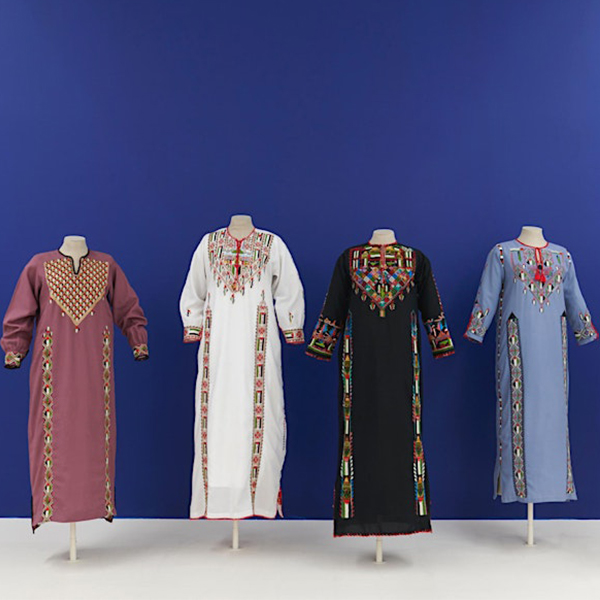The talk accompanies ‘Material Power: Palestinian Embroidery’, an exhibition curated by Rachel Dedman, currently on display in Manchester.
Embroidery is the most important cultural material of Palestine. This ancient practice, called tatreez in Arabic, is characterised by remarkable beauty and complexity. Beginning with an introduction to embroidery’s traditional making, this paper traces Palestinian embroidery’s adoption as a touchstone of national heritage following the Nakba of 1948, and argues for its subsequent politicisation, through PLO policy and the representation of embroidery by artists.
During the First Intifada uprising, 1987-1993, ‘Intifada Dresses’ were made and worn by women living in refugee camps and villages of the West Bank, and by those in the diaspora. At a time when Palestinian symbols were banned in public, traditional motifs mingled with doves, rifles, and signs of allegiance to political parties, embroidered in national colours. While protest is associated with immediacy, embroidery is by its nature hand-made, private and slow. Intifada dresses, years in the making, render material the conceptual and psychological strength of the Intifada, through the labour of women.



